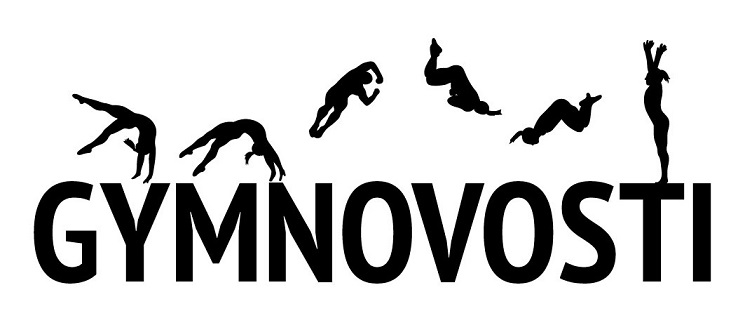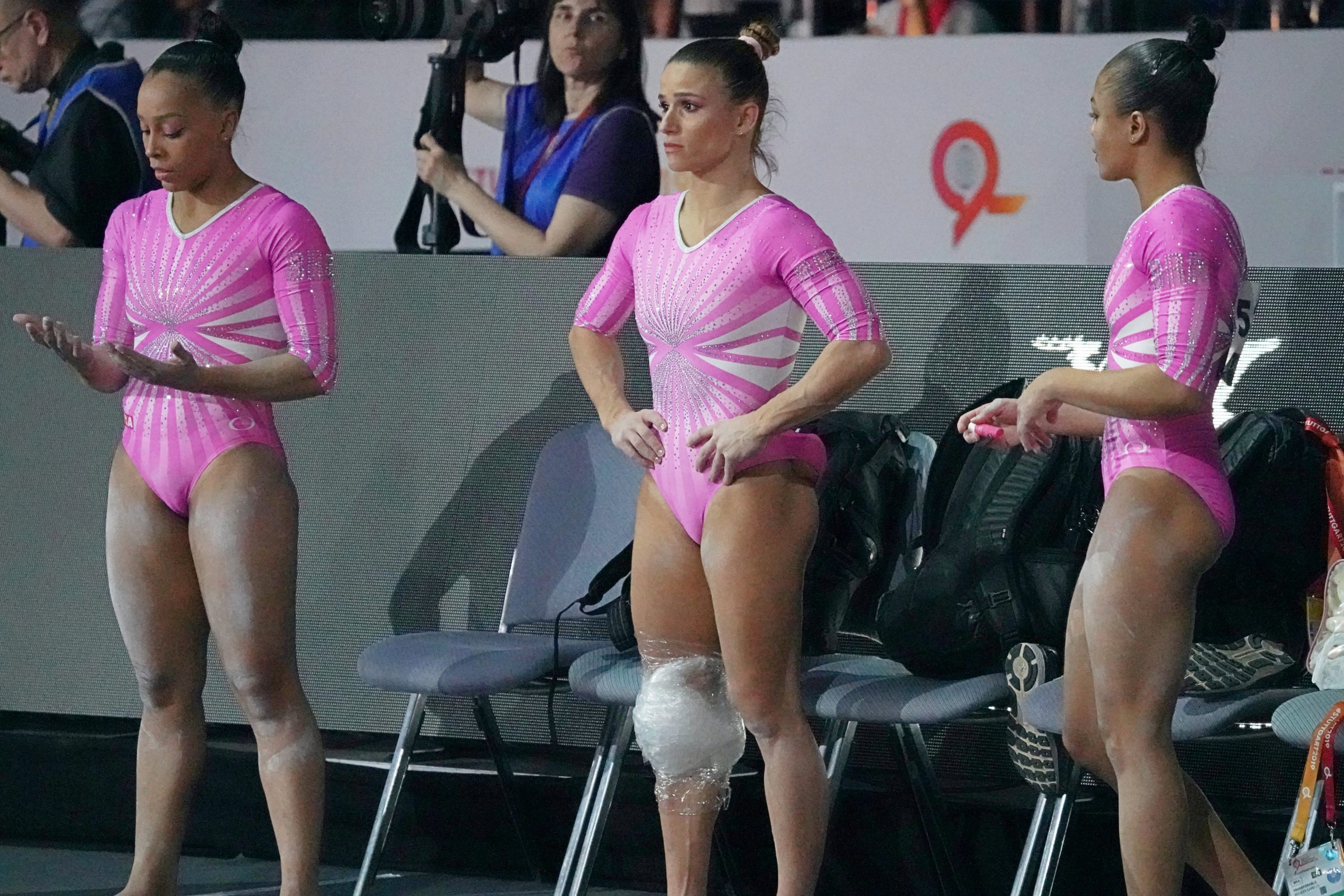At the start of the quad, Brazil looked like they could potentially challenge for a team medal. They competed in the team final at the Rio Olympics. They lost Aleksandr Aleksandrov but gained Valeri Liukin. They had trouble managing their nerves in the team final in at the 2018 Worlds, just as in 2016, but they were still among the strongest WAG teams. However, the lack of depth and, as it seems, mismanagement of the program, led to Brazil not qualifying to the Tokyo Olympics. Demetrio Vecchioli of olharolympico wrote a blog analyzing the situation in the Brazilian WAG. Renata Cappeliano translated the blog to English in an effort to disseminate the information to the audience outside Brazil.
What Brazilian WAG did wrong to end up out of Tokyo 2020
Good results in sports are only sustainable when efficient infrastructure, talented athletes and qualified coaching converge.
If Brazilian WAG failed on its attempt to qualify for the next Olympic Games, despite offering first world infrastructure to its best generation ever, it’s not hard to guess what it lacks nowadays: high performance coaches. With only a few working in the country, Brazil suffers to produce enough athletes to feed its national team.
A group of four gymnasts enjoy full support from COB, the Brazilian Olympic Committee: Jade Barbosa, Lorrane Oliveira, Flávia Saraiva and Rebeca Andrade, who are teammates at Flamengo – the popular soccer club that also has an above average gymnastics department (for Brazilian standards).
Carolyne Pedro and Thaís Fidélis are also part of this select few. Over the years, this resulted in the squad coached by Valeri Liukin functioning as a permanent team.
However, while Flamengo’s girls can rely on COB’s physiotherapists, masseurs, physicians, psychologists and nutritionists in Rio, the other two, who go to a gym called Cegin in Curitiba (a city located almost 524 miles away, in another state), need to pay to have similar support.
Nobody denies that these six are Brazil’s elite, that they are a step ahead of the competition and worthy of all the support they can get. But six are not enough, and that became clear in Stuttgart, when, as a last minute resource, the team had to turn to Letícia Costa – who works as a managing assistant at COB and only trains in her spare time. Revealing new talent demands qualified coaches, active clubs and a confederation that has a voice. But Brazil’s CBG does nothing as the Olympic Committee acts as it owns Brazilian WAG, imposing its heavily medal-oriented policies.
This blog spent the last few days on the phone with people who live and breathe gymnastics. They were all surprised by the bad outcome, but not because they believe things aren’t going that well. Simply put, they were expecting Brazil to somehow qualify for Tokyo, and then face its biggest crisis in history in the next quad.
Where are the coaches?
Two-time olympic medalist Arthur Zanetti always had his lifelong coach, Marcos Goto, by his side. It’s gymnastics golden rule: athlete and coach walk together. That’s how Keli Kitaura and Francisco Porath put Rebeca Andrade in the national team, Alexandre Carvalho matured with Flávia Saraiva, Roger Medina helped Thaís Fidélis become this quad’s most promising gymnast and Ricardo Pereira grew with Jade Barbosa.
If Brazil is so well represented by its main girls, it’s because talented coaches recognized their potential and stayed with them.
It could have remained that way, if they had a say. In early 2016, Keli, Alexandre and Ricardo presented COB with a project to go to different parts of the country, away from the South/Southeast, to develop gymnastics and spot new talent. Many meetings were held, but the idea was rejected. “I don’t wanna be in anybody’s way. It was a complicated moment for COB, the three of them had proposals to leave and I didn’t have the means to back that project”, says Jorge Bichara, COB’s sports director.
Before the end of that year, Brazil’s gymnastics had lost all three coaches. Keli and Alexandre moved to New Jersey (USA), to start a project in a local club, from scratch. Ricardo is now in Canada, looking for new names and putting together the Canadian team for 2024. Roger Medina became Argentina’s head coach. They didn’t get the support they needed from COB or CBG and also were let go by their clubs.
Only two coaches, out of the six that shaped Brazil’s elite girls, are still in the country: Ucranian Irina Ilyashenko, who’s been living in Curitiba for 20 years, and Francisco Porath, requested by COB to work specifically with Flávia, Jade, Rebeca and Lorrane. Georgette Vidor, who discovered Daniele Hypólito, Flávia Saraiva and worked closely with Rebeca Andrade, is being ignored by CBG. She went to Stuttgart on her own – the confederation didn’t even pay for her tickets. She had to lean on her international colleagues to go and see Brazil fail.
“We can say there’s a ‘knowledge monopoly’ in the hands of Henrique Mota (CBG’s WAG coordinator) and Jorge Bichara “, someone with access to the team protests. Both executives deny it. According to COB, in 2014 its school of coaches, called the ABT, qualified 37 professionals, after 750 hours of training. Last year, they all went through a refresher course. CBG stresses that in 2018 eight camps were conducted, all open to the gymnasts’ personal coaches. The ones heard by this blog say that it will take time for such initiatives to pay out.
“The coaches that could shape a new generation are no longer here. Fávia and Rebeca may still be competing in 2024, but there will be a void. It’s impossible to predict if the new girls will be that good, because there’s nobody to work with them”, says another coach.
A routine of privileges
Saying that the sport doesn’t get the attention it deserves would be dishonest. WAG is among COB’s priorities and they never fail to support Flamengo’s four gymnasts, who practice everyday in a special facility in Rio, as well as Cegin’s Carolyne and Thaís – even though they are based in Curitiba.
COB also pays for Rebeca, Jade and Lorrane to live in apartments near the gym, a prerogative of athletes of all disciplines who are in “constant training”, according to the committee.
Out of the five girls who represented Brazil in Stuttgart, four earn at least R$ 10,000 a month (country’s average is a little over R$ 2,000). This money comes from the federal government, the state of Paraná (for Carolyne and Thaís), Flamengo and CBG. Letícia Costa, on the other hand, lives on a R$ 925 per month program called Bolsa Atleta. Her club, Fluminense, doesn’t pay its gymnasts, but offers scholarships. To complement her income, she began working at COB’s headquarters, first as an apprentice, then as an intern and now as a managing assistant.
Letícia only started high intensity training three weeks before World’s, aware that she’d probably be the first alternate. Which actually happened: Carolyne Pedro injured herself and Letícia, who was coming back after a four year retirement, had to step up. Bichara believes it was good for her. “She found a way to practice with her personal coach, at Fluminense, between her working hours, and was able to achieve the results she needed. She qualified because of her results. Maybe she’s the only athlete of this level in the whole country who has a job besides training. I don’t think it was prejudicial. It made her grow as a person”, he says, stressing that being a COB employee made no difference in her choosing.
At Nationals, despite her poor training conditions, Leticia tied with Carolyne Pedro in the AA. Coaches who agreed to talk to this blog say that the issue is not that Leticia got into the team, but the fact that a national squad with so much financial, political and structural support needs to rely on a non-professional athlete during a key moment in the Olympic cicle.
“Everyone knew Brazil only had six gymnasts. If two of them got hurt, we’d have nowhere to run. And that’s exactly what happened: two girls got injured and Liukin had no plan B”, says another coach. Three of the people that we interviewed believe that 35-year-old Daniele Hypólito was put aside too soon. She was National Champion in 2018, but did not compete in 2019. She’s also one of the 11 gymnasts who have a CBG salary – the others are the six “top girls”, Anna Julia Reis (who’s injured), and three juniors. The confederation claims it cannot say how much each athlete receives, due to a non-disclosure agreement with Caixa Econômica Federal. The same NDA allegedly forbids them to reveal the criteria for who gets the grant and who doesn’t. Even though receiving a benefit called Bolsa Pódio, Rebeca and Flávia earn around R$ 5,000 per month.
Only a few go to international competitions
With the Pan-American Games approaching, followed by Worlds, it was decided that Brazil would not send its top gymnasts to the South American Championships, in late June. But instead of nominating a less experienced team to compete in Santiago (Chile), the technical commission chose to skip the event. “This should have been an opportunity to test the girls who didn’t qualify for the Pan-Ams or Stuttgart. But CBG didn’t send anyone, didn’t say anything”, a coach from an important club complains.
The consequences of not sending its “B” team to the South American Games may be devastating for Brazilian WAG. Five athletes lost the chance of medaling and incrementing their Bolsa Atleta benefit, which would rise from R$ 925 (less than Brazil’s minimum wage) to R$ 1.850. “It was the technical comission’s choice not to go to Santiago. We give them this kind of autonomy”, says Henrique Motta, trying not to imply any criticism. “We are always re-evaluating our plans. Of course, we have to take the facts into account, to have the best outlook in order to achieve the best possible results”.
Where did the athletes go?
Only Thaís Fidélis, Carolyne Pedro and Letícia Costa compete at this years’ Brazilian National Championships, last August. Thaís won the AA, followed by Carolyne and Letícia. The other gymnasts who took part in the competition did not reach the level to fight for a place in the national team. In total, 12 seniors competed at the event. A gymnast is considered to be a senior at the age of 16, so every year, a new group of girls become eligible to the national squad.
During this quad, only Carolyne and Thaís were given repeated opportunities to represent Brazil internationally. The other seniors, old and new, were lost along the way, due to injury or lack of incentive. Few sports are so demanding, both physically and psychologically, and when an athlete see their efforts not being rewarded, it’s tough to carry on. Fabiane Brito hurt her knee and gave up on gymnastics. With no support, Julie Kim did the same. Luiza Domingues stopped being nominated for the national team and cut down on training. Anna Júlia Reis is injured and may not return.
“In 2012 we also suffered to nominate a team of older girls, and they almost didn’t qualify. But we knew it wasn’t something permanent, that soon Flávia and Rebeca would be ready. Like when you run out of money, but it’s ok, because your next paycheck is coming. Now, we better start selling cake in the streets*”.
*a popular saying, in this context.



